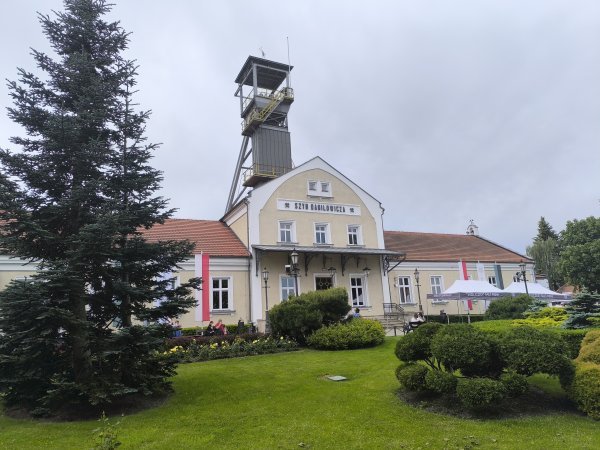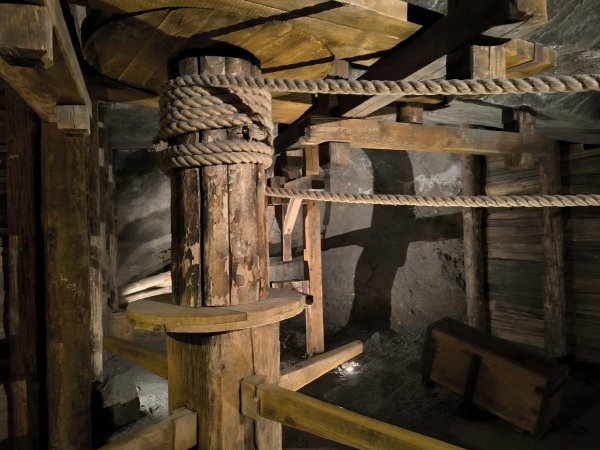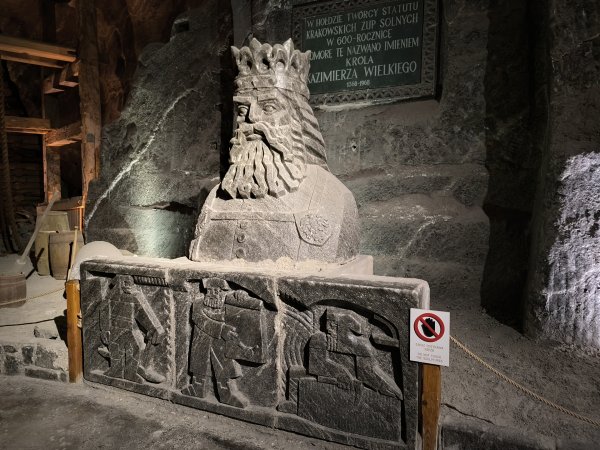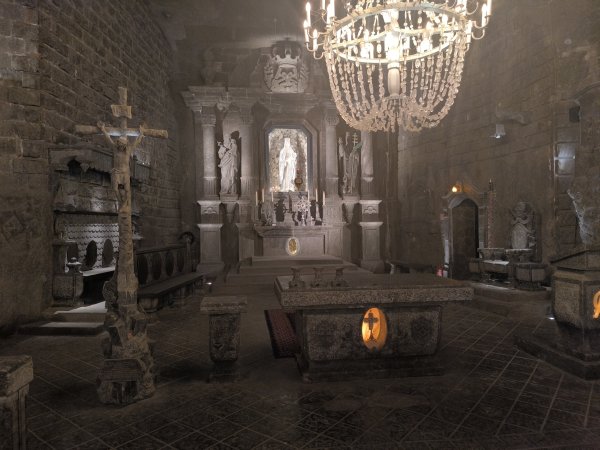
There are many sights in the neighborhood of Kraków like the abbey of Tyniec or Oświęcim (Auschwitz), but since I come from a miner family, it was not a question that we would choose the Wieliczka Salt Mine (Kopalnia Soli Wieliczka) located not so far from Kraków.
The mines of Wieliczka and another town, Bochnia formed all together the Żupy krakowskie (Kraków Salt Works), and it was a royal privilege to gather the income of salt mining just as in other countries in the Middle Ages.



Although my village had a tradition of coal mining, so the analogy did not completely work, I think the mine would have been just as fascinating even if I had not had any connections to mining. Due to the high number of Hungarian tourists, just like in Zakopane, you may bump into locals in Wieliczka as well trying to speak Hungarian.
The guided tour though was in Polish, but I understood all the basic information, and I knew some stories about the mine anyway. Yes, of course, there is another legend I had made research about, and it is about how the salt was first discovered near Wieliczka.


The legend says that Hungarian princess St. Kunigunda (St. Kinga of Árpád) was proposed by Duke Bolesław V the Chaste, and before her trip to Poland, she threw her engagement ring into the salt mine of Máramaros, Transsylvania wishing if she could give the mine to her future husband as a wedding gift.
Then, while showing the Polish countryside to the princess, the servants found something strange in the ground near the village of Janowice.


Following the order of Kunigunda, they started digging and then they found the engagement ring of the princess, but not only the ring: in fact, they discovered that it also magically transferred the salt of the Máramaros mine to Poland!
Thus the wish of Kunigunda came true, her husband got the wedding gift and Wieliczka became famous for its salt all around Europe.



In spite of the legend, people already knew about the salt underground from the most ancient times, and they have always paid attention for it. Whoever ruled the region, Goths, Vandals, Slavic tribes, Germans or Poles, salt mining never stopped, and it even continues today – even if it happens with different and more advanced techniques.


One had to take hundreds of stairs downstairs, and although we were worried that we should do the same backwards, it quickly turned out that we would take an elevator in the end, which was a huge relief for everyone.
At the beginning we only saw some corridors, but after opening a swing door we felt the wind of the mine blowing, and we knew that we had arrived to a completely different world.


The Salt Mine had many different chambers named after a famous Polish person or place (Casimir the Great, Copernicus, Marshal Piłsudski, John Paul II, Warsaw), and their stone statues were also installed there many times.
There were other sculptures and figurines related to mining, even some from the land of fantasy, like the soliludki (salt dwarves) - such characters are almost obligational in every Slavic forest and cave, and it was not different in Wieliczka either.


At the same time, some other, life size figures were representing the miners (górnicy), their tools, horses and other workers of the mine to show how they used torches and set the methane on fire: the most dangerous gas which is able to blow up whole mines if it dissolves with air.
One of the biggest mine explosions in Hungary happened actually in my village, Tokod in 1942 and it killed more than fifty miners (Erzsébet-akna - Mineshaft Elisabeth).


Among the different tools and machines there were many fascinating ones, just like the pies węgierski (Hungarian dog) which was a sort of carriage. Speaking of Polish-Hungarian connections, I cannot pass by the moment when we entered the Janowice chamber where there was the statue of St. Kunigunda of Hungary.
The sculpture showed exactly the scene when a servant finds the princess’s ring and gives it back to her: the moment when the salt was found near Wieliczka.


Of course, I was extremely proud that there was something connected to my country in Polish history, and also the fact that I already knew the story due to my planned book on Slavic culture.
The most impressive room is also related to the princess: it’s the St. Kunigunda Chapel, which had beautiful lights, candles, sculptures and reliefs everywhere, while its magical gray color dominated the entire hall.
The infinite ceilings, rocks and pillars created the vibes of an underground city or church with its own rules, full of biblical scenes and Christian legends.


I cannot forget about the reservoirs collecting the water of the mine either, which looked like whole, intact lakes under the surface, resting in complete darkness.
From time to time, there were some sound effects and theatrical lights to tell us a story or part of the mining process, which made the presentation more comprehensible even for those who did not understand the guide.


Last but not least I have to mention another, smaller chapel, the one of St. Anthony where the miners gathered to pray before and after their shift, which highlights people’s approach towards religion and their way of thinking from many centuries ago.
The most interesting was the last room before the souvenir shops and restaurants, since, as it turned out, it was capable to host events such as conferences or weddings. Who would not like to get married 300 meters underground, right?



The elevator bringing us back to the surface looked like a very old machine, but surprisingly it was quite fast and we got back to the sunshine, to the central mineshaft called Szyb Daniłowicza within a few minutes.
It was hard to imagine that until the last century there were, and there still are people who spend their whole lives in such different worlds far away from everything which is natural for a person living above.



Salt, gold, silver, coal, ore - just some of the most important goods driving the economy for centuries, and no matter if these people worked in mines voluntarily or they were forced to do it as prisoners and slaves, life just would not have been the same if they had not been brave enough to go downstairs and sacrifice themselves for these treasures.
It is one thing that I have fulfilled my dreams and finally gone to all these legendary places in Poland, but apart from all the supernatural stories with dragons, dwarves, giants and bandits, I had to realize that the greatest miracle in our existence is sometimes human willpower itself.
